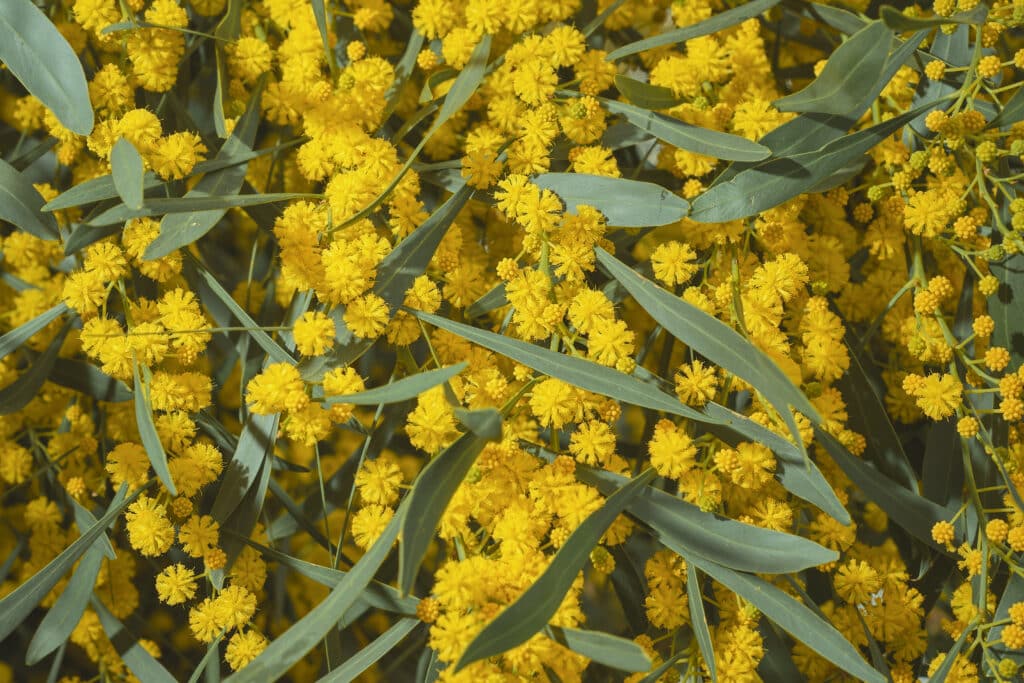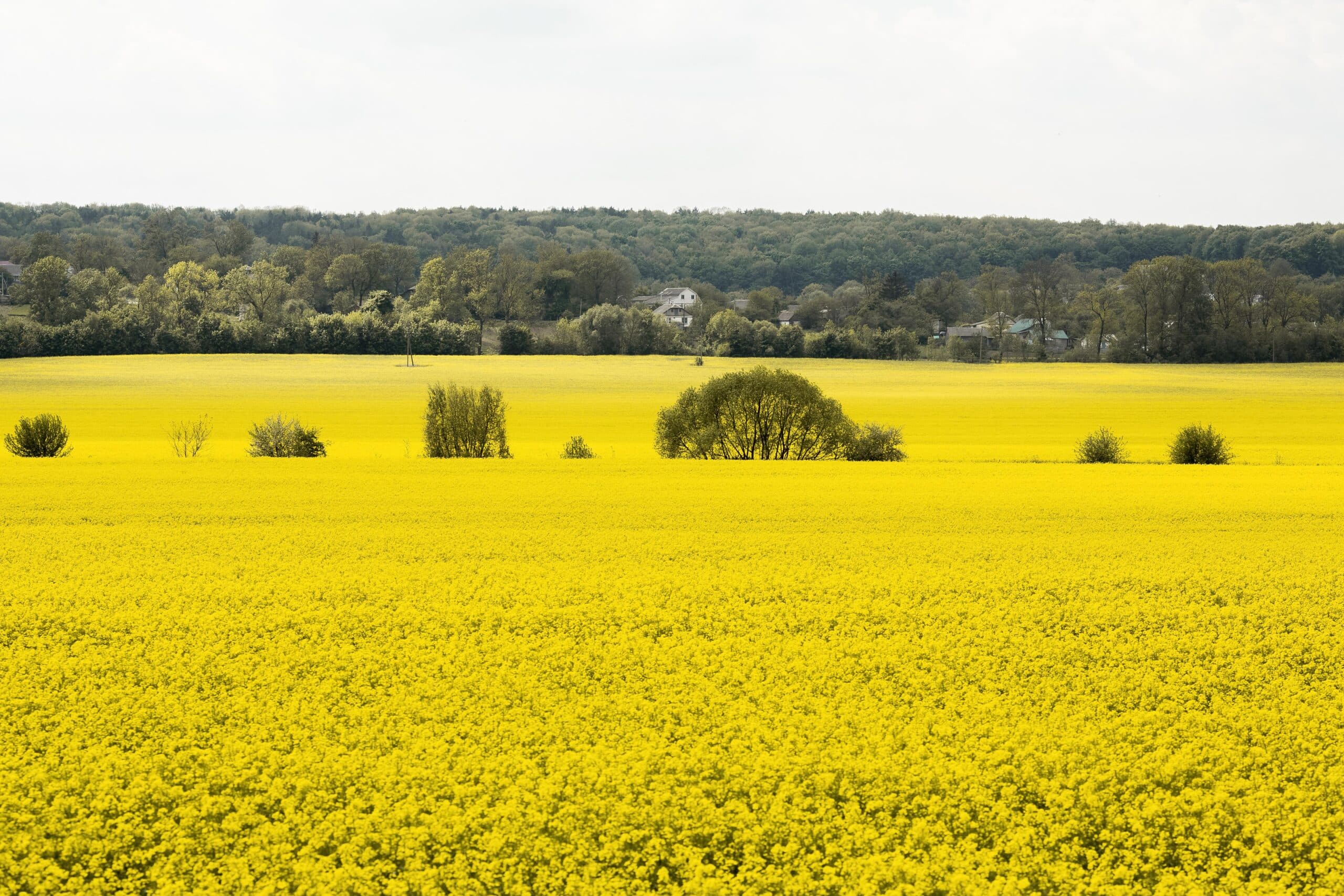Best Practices For Harvesting Goldenrod
For many, the allure of goldenrod’s vibrant blooms signals an opportunity for herbal harvests. This hardy plant, known scientifically as Solidago, is not just a pretty sight—it packs powerful medicinal properties.
Within this article, we’ll navigate the steps to ethically and effectively gather goldenrod so you can harness its benefits safely and sustainably. Discover the secrets to perfecting your goldenrod harvest right here!
Key Takeaways
- Look for bright yellow flowers and lance-shaped leaves to find the right goldenrod plant, avoiding lookalikes like ragweed.
- Harvest goldenrod in late summer or early fall. Choose dry days with no dew on the plants for best results.
- Dry collected flowers and leaves properly before storing them in airtight jars away from sunlight to keep them good.
- Be careful when using Goldenrod if you have heart or kidney problems, and talk to a doctor before use.
- Use Goldenrod’s anti-inflammatory and antimicrobial qualities for natural remedies like teas, tinctures, and salves.
Identifying Goldenrod
Goldenrod can be identified by its clusters of yellow flowers and long, slender leaves. It’s important to distinguish it from lookalikes such as ragweed to ensure proper identification for harvesting.
Flowers

Goldenrod flowers stand out with their bright yellow color. They bloom in clusters, reaching or spreading near the plant’s top. These flower bunches are key to knowing you’re looking at a goldenrod.
The blooms are not just pretty; they also bring bees and other pollinators buzzing around because of their sweet nectar.
Harvesting these yellow flowers can give you more than beauty for your garden. You can dry them to make goldenrod tea, known for helping with colds and relaxing muscles.
Make sure you pick the bright, fresh ones, the best qualities for your herbal remedies and teas.
Leaves
The leaves of the goldenrod plant are shaped like lances and take turns growing on the stem. They are a bit jagged on the edges but have a smooth feel overall. When goldenrod leaves are young, they’re soft and taste better.
As they get older, though, they become rougher. The best leaves to pick for eating raw or making tea come from the top of the plant.
You can gather these leaves to dry for tea anytime before the flower shows up. To dry them well, hang them up in a place that is not too warm or sunny until there’s no moisture left in them.
Dried goldenrod leaves can be kept for later to make teas that help with health problems like urinary tract issues and seasonal allergies.
Lookalikes
Goldenrod has a few plants that look very much like it. This can make it hard to tell them apart, especially if you are new to foraging goldenrod. Ragweed is one common plant that often gets mixed up with goldenrod because they both have yellow flowers and grow in the same places.
However, ragweed flowers are not as showy, and their leaves look different.
You need to be careful when picking this plant. Some plants that look like goldenrod can be poisonous if you mistake them for the real thing. Learn how each part of the true goldenrod looks – its bright yellow flower clusters and pointy leaves on only one side of its stems are key signs to help tell it apart from others.
Always check your plants before deciding they are safe for tea or natural remedies.
Best Practices for Harvesting Goldenrod
Harvest timing is crucial, as goldenrod blooms in late summer and early fall. Selecting healthy plants, ensuring proper preparation and storage, and considering safety are essential for successful harvesting.
Timing the harvest

Harvest goldenrod flowers on a dry day, preferably during a sunny mid-morning when there is no rain or dew on the plant. This is the best time to gather them for medicinal uses like making tinctures and natural dyes.
Wait until fall after the first heavy frost for goldenrod roots, then wash and dehydrate them thoroughly.
Timing the harvest of goldenrod greens is crucial, too. They are softer and tastier when young, so gathering them before they mature and toughen up is best. Incorporating fresh goldenrod leaves into tea blends can provide respiratory benefits due to their anti-inflammatory properties.
Selecting healthy plants
When choosing goldenrod plants for harvesting, look for strong and hardy ones. Healthy, vibrant plants are best for medicinal use. Before picking, check the plant for signs of disease or damage.
Select plants just before they start blooming to make tea.
Proper preparation and storage
To properly prepare and store goldenrod for later use, consider the following steps:
- Harvest goldenrod from healthy, robust plants to ensure the quality of the plant material.
- Choose a low-humidity day to dry the flowers and leaves fully before storage.
- Utilize a dehydrator or air-dry method. Spread goldenrod flowers and leaves in a single layer in a location with good airflow.
- Store dried goldenrod in airtight containers, such as mason jars, away from direct sunlight and humidity to maintain potency.
- Label containers with the harvest date to track freshness and potency.
- Always ensure that the seeds are fully dried before storage.
Safety considerations
When harvesting goldenrod, it’s essential to be aware of potential side effects. This herb can have diuretic effects and may not be suitable for individuals with cardiac and kidney disorders.
Considering these factors is crucial, especially if you use goldenrod for medicinal purposes.
It is important to exercise caution and consult a healthcare professional before using Goldenrod, particularly if you have specific health conditions or are taking medications. Understanding the possible side effects ensures you can make informed decisions about incorporating goldenrod into your health regimen while minimizing any potential risks associated with its use.
Benefits and Uses of Goldenrod
Goldenrod is known for its anti-inflammatory properties, making it a popular remedy for arthritis and muscle pain. Additionally, the antimicrobial properties of goldenrod make it useful in treating urinary tract infections and upper respiratory issues.
Anti-inflammatory properties
Goldenrod has anti-inflammatory properties that help reduce inflammation and relieve muscle spasms. These qualities make it a beneficial natural remedy for conditions such as arthritis, gout, and other inflammatory issues in the body.
Its anti-inflammatory nature contributes to its soothing qualities, making it useful for various health benefits. Whether infused into herbal medicine or used as a natural salve, goldenrod’s medicinal benefits are valued for their ability to alleviate discomfort associated with inflammation.
Additionally, goldenrod’s astringent properties aid in tightening tissues and reducing excessive secretions from mucous membranes, further contributing to its use in alleviating upper respiratory issues like coughs and sinusitis.
Muscle relaxant
Goldenrod has been shown to have muscle relaxant properties, making it a natural option for reducing muscle spasms and promoting relaxation. This herb is utilized to help alleviate pain, reduce inflammation, and ease muscle tension.
Its potential as a muscle relaxant makes it a valuable resource for individuals seeking natural remedies for muscular discomfort.
Research indicates that goldenrod can aid in reducing swelling and easing muscle spasms, offering a complementary approach to supporting the body’s natural ability to unwind and heal.
Antimicrobial properties
Goldenrod has a long history of being used for its antimicrobial properties, which help stop harmful bacteria growth. This plant has been traditionally used to heal wounds and act as an antiseptic due to its antimicrobial benefits.
Studies have shown that goldenrod contains compounds that can fight off harmful microorganisms, supporting its traditional use as an effective antimicrobial agent. Additionally, the plant’s anti-inflammatory properties further indicate its potential antimicrobial benefits, making it a valuable natural remedy for various health issues.
Solidago species, including goldenrod, are often employed in traditional medicine as potent antimicrobial agents due to their ability to inhibit the growth of harmful bacteria and microorganisms.
FAQs
Q: What is goldenrod, and how is it used as an herb?
A: Goldenrod is a flowering plant commonly used for medicinal and culinary purposes. The dried flowers and leaves of the goldenrod plant are often used to make tea and tinctures or to add flavor and color to various dishes.
Q: Can goldenrod be used for foraging, and if so, how?
A: Yes, goldenrod can be foraged for medicinal and culinary uses. Foragers can harvest the fresh flowers and leaves of the goldenrod plant and then air dry them to be used in various herbal remedies or recipes.
Q: Is goldenrod effective in treating urinary issues?
A: Goldenrod is known for its diuretic properties and has been traditionally used to support urinary health. It can be used to make an herbal tea that may help with urinary concerns.
Q: What are some best practices for using goldenrod to alleviate seasonal allergies?
A: For those looking to use goldenrod for seasonal allergies, it’s advised to use the dried flowers and leaves to make a tea or tincture. It’s also recommended to consult a herbalist or healthcare professional for guidance.
Q: How can goldenrod be used to create natural dye?
A: Goldenrod can be used to create a natural yellow dye. The dried flowers of the goldenrod plant are often utilized to produce vibrant yellow hues in fabrics and other materials.
Q: What are some precautions to consider when harvesting goldenrod for use?
A: When foraging for goldenrod, it’s important to confirm the species of goldenrod being harvested, as some species may not be suitable for certain uses. Additionally, avoiding over-harvesting and respecting the goldenrod’s natural habitat is crucial.
Q: Can goldenrod be consumed, and if so, in what forms?
A: Yes, goldenrod can be consumed. It can be used in herbal teas, as a culinary dish ingredient, or as a medicinal tincture.
Q: Is goldenrod beneficial for the respiratory system?
A: Goldenrod is believed to have properties that support the respiratory system. When used in herbal remedies, it may provide benefits for respiratory health.
Q: How does goldenrod help in supporting native insect populations?
A: Goldenrod is insect-pollinated and provides a food source for various pollinators, supporting native insect populations and contributing to ecosystem diversity.
Q: Are there affiliate links associated with products related to Goldenrod?
A: This FAQ does not contain affiliate links. However, when seeking information on products related to Goldenrod, it’s advisable to be cautious about affiliate links and to verify the credibility of sources.

